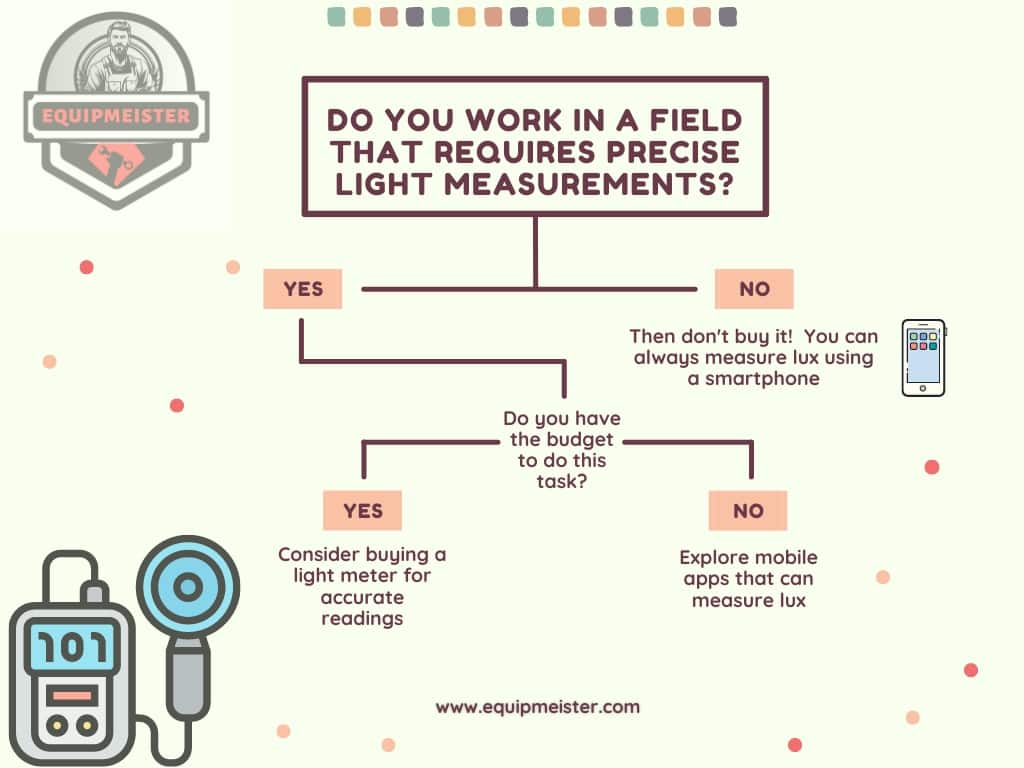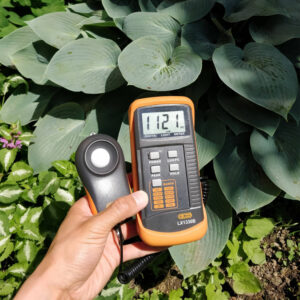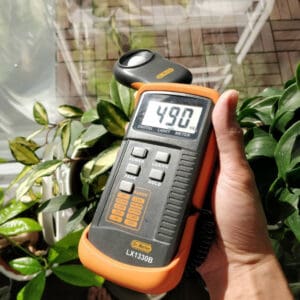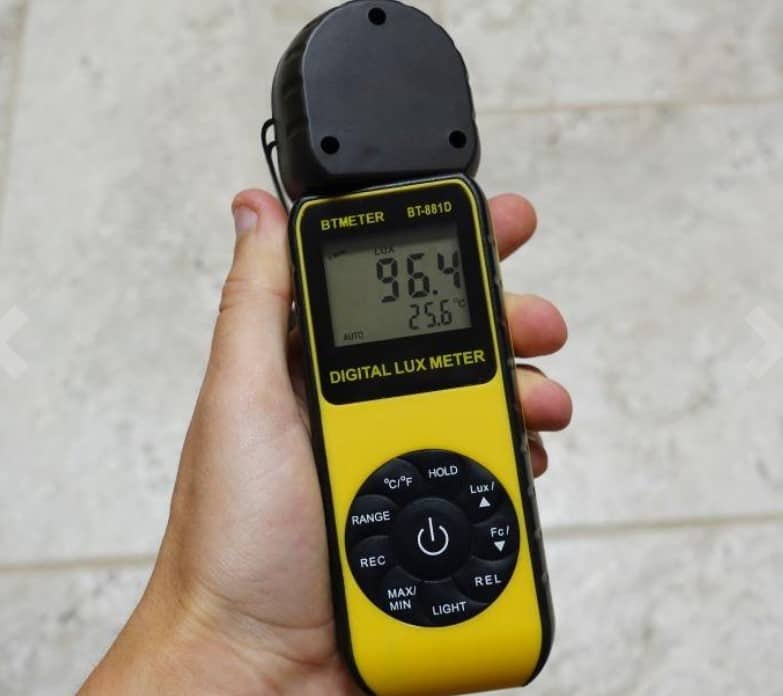Imagine you’re on location, setting up for a crucial photoshoot. The lighting is tricky, and you need precision to capture the perfect shot.
Suddenly, you realize you forgot your light meter. The uncertainty sets in. Should you proceed without it, risking subpar results? Or is it worth the investment for that extra confidence and control over your lighting?
Thinking about getting a light meter? I have created a decision tree that can help you decide whether it is worth buying a light meter or not.

Still confused? Don’t worry, I’ve got you covered. Just continue reading. I have added more information in this blog post that will help you make a decision on whether to invest in a light meter or not!
Is it Worth Buying a Light Meter?
Light meters are worth buying for precise light intensity measurements in photography, cinematography, and indoor lighting design to ensure optimal exposure and lighting.
However, for general use, smartphone apps or built-in camera light meters often provide adequate functionality, rendering a separate light meter unnecessary.
Light meters, also known as illuminance meters or lux meters , are generally used to measure the intensity of light in a given area. These nifty gadgets are extensively used in photography, cinematography, indoor lighting, gardening, and many more places.
, are generally used to measure the intensity of light in a given area. These nifty gadgets are extensively used in photography, cinematography, indoor lighting, gardening, and many more places.
Whether or not it’s worth buying a light meter depends on your specific needs and circumstances. Here are some factors to consider when deciding:
Purpose:
Light meters have a wide range of applications, making them useful tools for both professionals and hobbyists.
In photography and videography, where achieving proper exposure on your subject is paramount, light meters provide precise measurements of ambient light or flash intensity, ensuring accurate settings for optimal image or video quality.
for optimal image or video quality.

Similarly, indoor gardeners can use light meters to monitor light levels and create ideal growing conditions for plants. Cultivators can optimize yields and promote healthy growth by adjusting lighting setups based on the intensity of light reaching plants
and promote healthy growth by adjusting lighting setups based on the intensity of light reaching plants
In architectural lighting design, light meters help designers assess illumination levels within spaces and ensure compliance with lighting standards and aesthetics. By measuring light levels at various points, designers can create well-lit environments that improve functionality and ambience.
In a study conducted in 2023, it was found that a considerable number of professionals in photography and videography (70%) expressed a strong inclination toward purchasing a light meter, recognizing its pivotal role in achieving precise exposure and settings.
In contrast, a smaller percentage of individuals engaged in indoor gardening (15%) and architectural lighting design (15%) showed interest in purchasing a light meter, recognizing its potential benefits in monitoring light levels and ensuring optimal illumination, respectively.
| Purpose | Percentage |
|---|---|
| Photography and Videography | 70% |
| Indoor Gardening | 15% |
| Architectural Lighting Design | 15% |
Accuracy:
Light meters provide precise measurements of light intensity, allowing you to achieve desired lighting effects or ensure optimal conditions for plant growth.
If you require precise control over lighting conditions or need to maintain specific light levels for your projects or activities, investing in a quality light meter can be worthwhile.
For photographers and videographers, especially those working in controlled studio environments or challenging lighting conditions, the ability to obtain accurate light measurements is crucial for ensuring consistent and precise exposure adjustments.

This level of control is fundamental for achieving the desired mood, tone, and depth in visual compositions.
Likewise, in indoor gardening or hydroponic setups, where light serves a critical role in photosynthesis and plant development, precise light levels are indispensable for maximizing growth and yield.

A reliable light meter enables growers to monitor light intensity accurately and fine-tune artificial lighting sources as necessary to cater to the unique requirements of different plant species and growth stages.
Light meters offer higher accuracy and a wider measurement range compared to smartphone lux applications, making them suitable for professional use in photography, videography, and lighting design, despite being more expensive ($50 – $500+). Smartphone lux apps, often free to $10, are easy to use but may lack calibration and offer less consistent readings over time.
| Aspect | Light Meters | Smartphone Lux Applications |
|---|---|---|
| Accuracy | ±2% | ±5% |
| Measurement Range | 1 lux to 200,000 lux | 1 lux to 10,000 lux |
| Calibration | Typically calibrated with traceable standards | May lack calibration |
| Sensor Quality | High-quality silicon photodiode sensor | Dependent on smartphone's built-in light sensor |
| Calibration Options | Adjustable, multiple calibration points | Limited or none |
| Precision | Highly precise readings | Readings may vary |
| Ease of Use | User-friendly interface | Easy to use, often with simple controls |
| Cost | $50 - $500+ | Free to $10 |
| Professional Use | Common in photography, videography, and lighting design | Less common in professional settings |
| Consistency | Consistent readings over time | Readings may vary depending on smartphone condition and environment |
Cost:
Light meters range in price from relatively affordable to more expensive professional-grade models. Consider your budget and how often you’ll use the light meter.
If you’re a hobbyist photographer or occasional user, a more budget-friendly option may suffice. However, if you rely on accurate light measurements for professional work, investing in a higher-quality, more expensive light meter may be justified.
I have compiled a table detailing various types of light meters based on their common applications and average cost ranges.
Light meters commonly used in photography, videography, and cinematography, such as Incident Light Meters and Reflected Light Meters, range from $100 to $600.
Spot Meters, primarily for photography and cinematography, fall between $200 and $800, while Flash Meters for photography and studio lighting are priced from $150 to $600.
Specialized tools like Spectrometers, used in lighting design and research, range from $500 to $3000. Budget-friendly Lux Meters, suitable for indoor lighting assessment, typically cost $20 to $200, while Colorimeters for color measurement in lighting and printing range from $300 to $1500. UV Meters, designed for UV light measurement, are priced between $100 and $400.
| Light Meter Type | Common Uses | Average Cost Range |
|---|---|---|
| Incident Light Meter | Photography, videography, cinematography | $100 - $500 |
| Reflected Light Meter | Photography, videography, cinematography | $150 - $600 |
| Spot Meter | Photography, cinematography | $200 - $800 |
| Flash Meter | Photography, studio lighting | $150 - $600 |
| Spectrometer | Lighting design, research, scientific applications | $500 - $3000 |
| Lux Meter | Indoor lighting assessment, workplace safety, general use | $20 - $200 |
| Colorimeter | Color measurement in lighting, photography, printing | $300 - $1500 |
| UV Meter | UV light measurement for skincare, phototherapy, safety | $100 - $400 |
These cost estimates are approximate and represent some of the best products available in the market. Prices may vary depending on factors such as brand and features. Nonetheless, they serve as a helpful guide in determining whether investing in a light meter aligns with your needs.”
Convenience:
Using a light meter can streamline your workflow and help you achieve consistent results by providing accurate light measurements quickly and efficiently.
Whether you’re a photographer, cinematographer, interior designer, or simply someone who values precision in their endeavors, the utility of a light meter cannot be overstated.
If you value convenience and efficiency in your work or projects, a light meter can be a valuable tool to have on hand.
Alternative Methods:
In some cases, you may achieve similar results using built-in light meters on cameras or smartphones, or by estimating light levels based on experience.
However, in most professional environments, whether you’re navigating tricky low-light environments, managing intricate studio setups, or working on projects with specific technical requirements, the enhanced capabilities of a dedicated light meter become apparent.
By leveraging advanced technology and specialized features such as spot metering or spectral sensitivity adjustments, these devices empower you to fine-tune your settings with precision and confidence.
Dedicated light meters often offer greater accuracy and precision, especially in challenging lighting conditions or specialized applications.
Ultimately, whether a light meter is worth buying depends on your specific requirements, frequency of use, and budget. If accurate light measurements are critical to the success of your projects or activities, investing in a quality light meter can be a wise decision.
Benefits of Owning a Light Meter
Accurate Light Measurement:
One of the primary advantages of owning a light meter is its ability to provide precise measurements of light intensity.
In photography and cinematography, accurate light measurement is crucial for achieving the desired exposure and capturing high-quality images or footage.
Whether you’re shooting in natural light or artificial lighting conditions, a light meter helps ensure optimal exposure settings for your camera.
Consistency and Reproducibility:
Light meters help you to maintain consistent lighting conditions across different settings or time periods.
This is particularly important in professional photography and cinematography, where consistency in lighting is essential for achieving desired visual effects and maintaining continuity in images or footage.
With a light meter, you can ensure consistent lighting across multiple shots or scenes, resulting in a cohesive final product.
Energy Efficiency:
For businesses and individuals seeking to optimize energy usage, a light meter can be a valuable tool for assessing the efficiency of lighting systems.
By measuring light levels in different areas, you can identify over-lit or under-lit spaces and make adjustments to improve energy efficiency.
This not only helps reduce energy consumption and utility costs but also contributes to sustainability efforts by minimizing environmental impact.
Health and Well-being:
Proper lighting levels are essential for promoting health and well-being in indoor environments. Insufficient lighting can cause eye strain, fatigue, and discomfort, while excessive lighting can lead to glare and other visual discomforts.
can cause eye strain, fatigue, and discomfort, while excessive lighting can lead to glare and other visual discomforts.
With a light meter, you can ensure that lighting conditions meet recommended standards for occupational health and safety, enhancing the comfort and productivity of occupants.
Conclusion
In conclusion, owning a light meter can be a valuable investment for professionals and enthusiasts alike who rely on accurate light measurements for their work or activities.
Whether you’re a photographer, cinematographer, interior designer, architect, or industrial safety officer, a light meter provides the tools you need to assess and control lighting conditions with precision and confidence.
While the initial cost of a light meter may seem daunting, the benefits it offers in terms of improved accuracy, consistency, energy efficiency, and health and well-being make it a worthwhile investment in the long run.

